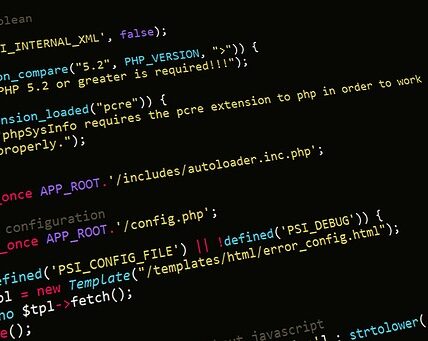Do you dream of becoming a professional React Native developer? Do you want to expand your knowledge and skillset? Are you ready to take the leap?
The demand for React Native developers is growing steadily. According to Stack Overflow’s 2019 developer survey, React remains one of the most popular frameworks for the second year in a row. Meanwhile, as reported by tech giant Microsoft, the job postings for React Native developers have seen a massive growth the in the last three years. With popularity of React Native going nowhere but up, it is no surprise that more and more people are considering going into this kind of development.
In this article, you will learn the exact steps you need to take to become a solid React Native developer. We will cover what React Native is, the technological skills you need to acquire and the potential career options available to you as a React Native specialist. Finally, we will provide you with resources and tips that will help you master the art of React Native development.
At this point, you are already well-equipped to embark on your journey into React Native development! Once you are able to identify and apply the core concepts of React Native development, you can start building effective applications that users will love. With the right foundation and guidance, you should be able to make your mark as a React Native developer.

Definitions
React Native is a JavaScript library for building native mobile applications for iOS and Android. It is an open source framework developed by Facebook that allows developers to create cross-platform mobile applications using JavaScript and React, a popular JavaScript library used for building user interfaces. It offers the ability to build applications for both iOS and Android quickly using one codebase, which helps save both time and money.
Cross-platform: The ability to write a single codebase that can run on both iOS and Android devices without major modifications.
JavaScript library: A collection of pre-written JavaScript code that can be reused to easily add functionality to webpages or applications.
React: A popular JavaScript library used for creating user interfaces. React Native builds on React to create native mobile applications for iOS and Android.
Open source: Open source software is publicly available and typically free to use. React Native is an open-source project created by Facebook, which means anyone can contribute to its development.
React native developer: A developer who is highly skilled in both JavaScript and React, and is knowledgeable about the React Native framework. They are skilled in creating applications for both iOS and Android using one codebase and can write code that works across platforms.
React Native Developer: How to Start Your Journey
Fundamentals Of React Native
React Native is a JavaScript library used for building user interfaces, particularly mobile apps. It allows software developers to write native code in JavaScript for both iOS and Android without needing to learn both languages. React Native is a framework based on React, a popular JavaScript library. React Native has made cross-platform mobile development easier. It enables developers to use one language when developing for two platforms and enables companies to be more efficient with their resources.
At its core, React Native’s main concepts are component-based, declarative programming style, and versatile platform interface. Components are the building blocks of any React Native app and comprise a self-contained module of code. Declarative programming style is a modern concept, where developers are taught to code in a way that describes how a certain task should be completed without outlining the specific details of the procedure. This allows developers to design an app with higher flexibility and easier maintenance.
The versatile platform interface of React Native helps developers create apps for different platforms without needing to learn other programming languages. This means that developers can use the same concepts and code base for different platforms, reducing the time and effort needed to make the app compatible across different platforms.
Learning React Native
React Native is easy to learn as it is based on JavaScript. It is recommended to have a fundamental knowledge of React and JavaScript, as the libraries are similar.
To get started with React Native, it is essential to go through tutorials and other learning materials on the internet. Tutorials vary in difficulty level from beginner to advanced. It is best to start with the basics and gradually move towards more advanced topics. Some of the popular online courses include React Native Essential Training by David Guttman and React Native and Redux by Stephen Grider.
It is also important to familiarize yourself with the React Native API. This can be done by looking through the official documentation for React Native. This is an important step as understanding the API will help developers build applications quicker and more effectively.
Testing React Native Apps
Once a React Native app is completed, it is essential to test it out. Testing an app ensures smooth performance and a superior user experience. Developers can test their React Native app in many ways, such as manual testing, automated testing, and emulators and simulators.
Manual testing is when the developer tests the app by physically using the device. This helps identify any bugs or issues in the app. Automated testing uses specific testing frameworks such as Jest and Appium to detect any errors or failures in the app.
Emulators and simulators are tools that help developers test apps on different operating systems and devices without having to physically use the devices. The popular emulator for React Native is the Android Emulator.
Tools Used In React Native Development
There are several tools available for development with React Native. Some of the popular tools are:
- Text editors: Atom, Sublime Text, and Visual Studio Code are some of the popular text editors used for development in React Native.
- React Native CLI: This is a command-line interface used for creating basic applications and running them on a device or simulator.
- Expo: Expo is an open-source platform that enables developers to quickly build and publish apps.
- Android Studio and Xcode: These are the official development programs for Android and iOS devices.
All of these tools help developers create applications faster and with a superior user experience. With the help of these tools, developers can easily create a React Native app from scratch.
Unlock the Power of React Native to Become a Skilled Developer
Learn the Basics First
Do you have what it takes to become a React Native developer? With the rise of the mobile revolution, React Native has become increasingly popular, enabling developers to create cross-platform mobile applications with relative ease. To become a successful React Native developer, one must first understand the basics of the framework.
Learning React Native requires dedication and practice, and there are numerous resources available to help developers get up to speed quickly. These resources include online tutorials and structured courses that cover everything from basic to advanced topics like state management, navigation, and app deployment. Additionally, many coding bootcamps, universities, and even on-site classes offer courses specifically designed for React Native.
The most important thing to remember when becoming a React Native developer is to stay up to date with the ever-changing mobile technology landscape. This means regularly checking the official React Native documentation and staying up-to-date with the trends in mobile development technology. Doing this will ensure you have the best skills and tools at your disposal for the most success.
Understand the Benefits of Using React Native
A key component of understanding the power of React Native is coming to grips with the benefits of using it over traditional Android and iOS development. One of the primary advantages of React Native is the ability to write code once and have it run on both iOS and Android devices. This saves developers time, as they don’t need to write duplicate code for each platform.
Another key advantage of React Native is its robust library of components. These components, such as navigation, views, and user interfaces, can be reused across platforms, giving developers the ability to create consistent experiences across both iOS and Android. Additionally, the use of JavaScript enables developers to develop apps faster and more efficiently.
The use of React Native also opens up the potential for real-time collaboration. Since developers can share code easily, they can work together in real-time, increasing efficiency and quality. This also encourages the best practices of frequent code reviews and pair programming.
Finally, the numerous resources available for developers using React Native ensure that they can quickly improve their knowledge. With numerous online tutorials, open source libraries, and dedicated platforms like Expo, developers can easily stay up to date with the best technologies and remain competitive.
Understanding the nuances of React Native, and all of its associated benefits, is essential for any aspiring React Native developer to stay ahead of the curve. With the right approach and attitude, there’s no limit to the possibilities of what you can accomplish.
Equip Yourself with Right Tools for Stress-Free React Native Development
Why Knowing the Right Tools is Key for React Native Development
React Native has grown to become one of the most comprehensive mobile development frameworks available today. It’s used for creating native mobile apps for Android and iOS platforms, and offers a range of tools that simplify and expedite the development process. But how do you know which tools to use when developing a React Native application? What features do you need to consider when choosing the best tools? To get the most out of your React Native development, it’s important that you equip yourself with the right tools.
Using the Right Tools to Streamline Development
When developing a React Native application, the tools you use can either help or hinder the development process. If you choose the right tools, you can simplify and speed up the process. But if you choose the wrong tools, you could also end up wasting a lot of time and resources. So what should you look for when choosing the best tools for React Native development?
One of the most important features to consider is the support for a wide variety of platforms. The best React Native development tools should offer support for both iOS and Android as well as easy integration with other platforms and frameworks. Additionally, the tools should also provide an intuitive user interface and powerful debugging capabilities.
Finally, it’s important to pick tools that are constantly updated and maintained, with a team of dedicated engineers and developers to ensure that the tools are always up-to-date. This will help ensure that the tools are always able to meet the demands of the latest React Native updates.
Creating a Stress-Free Development Environment
Having the right tools can go a long way towards creating a stress-free development environment. By leveraging the best tools, you can focus on the actual development process instead of spending time dealing with technical issues. This will help ensure that your projects are delivered on time and to the highest quality standards.
The best tools will also help reduce the amount of time spent on debugging and testing. These tools will provide automated testing capabilities, which can help expedite the process and ensure that any potential issues can be identified and fixed quickly. Additionally, the tools should provide debugging tools to help identify any potential issues quickly and easily.
Finally, the best tools should also offer good levels of scalability and performance. This will help ensure that your applications can scale with changing needs. Additionally, the tools should also provide good levels of security, allowing you to keep your business data and applications safe from potential threats.
In conclusion, having the right tools is essential for successful React Native development. By equipping yourself with the right tools, you can streamline and simplify the development process, allowing you to focus on delivering the highest quality applications. With the right tools, you can create a stress-free development environment, ensuring that your projects are completed on time and with the highest levels of quality.
Conclusion
Becoming a professional React Native developer is a challenging journey, yet the rewards can be bountiful. At first, it can be difficult to know where to even begin learning the framework, so it’s important to be aware of the resources available and create a study plan. After deciding to venture into the world of React Native, the next step is to ask oneself, “What will it take to be a successful React Native developer?”
It takes practice and experience to be able to navigate React Native’s syntax and architecture, as well as understanding the functionalities of the framework. With the constant evolution of technology, it’s important to stay updated on the latest changes in React Native. Reading blogs and staying informed of new releases can be a great way of staying up to date.
Finally, one of the keys to success as a React Native developer is practicing by creating projects. This will help hone the skills one has learned and get an understanding of the entire React Native application development process. By applying this knowledge to real-world scenarios, an individual can build a strong foundation of React Native development skills.
So, what are you waiting for? Dive into the world of React Native development and make sure to keep an open mind. Who knows, you may surprise yourself. Be sure to follow our blog to stay updated with the latest releases, as you step onto the journey of becoming a successful React Native developer.
F.A.Q.
Q1: What is React Native?
A1: React Native is a JavaScript-based mobile application framework created by Facebook used to develop cross-platform mobile applications for Android, iOS, Web and UWP. It is an open-source framework that combines the best components of native development with React, a popular web framework. It enables developers to build native mobile applications using JavaScript and the popular React component model.
Q2: How difficult is learning React Native?
A2: Learning React Native can be quite challenging, especially if you are a beginner. It requires dedication and a willingness to learn the fundamentals of the language, including JavaScript, HTML, and CSS. Additionally, a certain level of comfort with mobile development, such as debugging and app architecture, is beneficial.
Q3: Which languages are needed to develop a React Native app?
A3: React Native apps are written using JavaScript and other languages, including HTML and CSS. Additionally, native code can be used to develop components for Android and iOS. It is possible to use popular frameworks such as React Native and Redux to simplify the development process.
Q4: What are the advantages of using React Native?
A4: The major advantage of React Native is its cross-platform capabilities, which allow developers to deploy their code to multiple platforms with easy adjustments. It is also easier to maintain, as changes and updates can be pushed to the app across all devices. Additionally, React Native is a highly efficient language, allowing for faster application development.
Q5: What libraries are available for React Native?
A5: There are many open source libraries available for React Native, including UI components, navigation libraries, and state management libraries. More commonly used libraries include Redux, React Navigation, React Native Gesture Handler, and React Native Elements. Popular frameworks such as Flutter and Ionic are also available.




